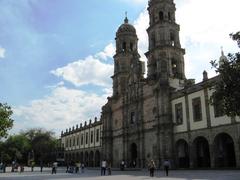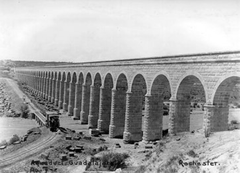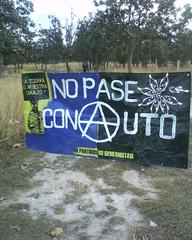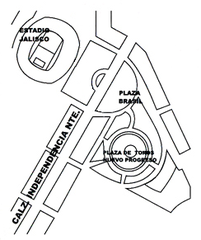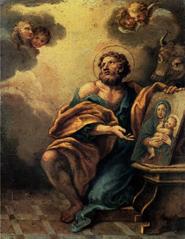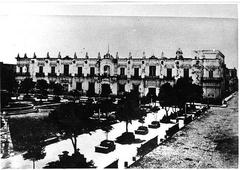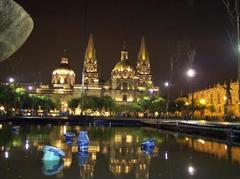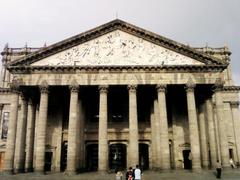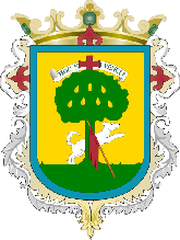
Santuario Mártires De Cristo Rey: Visiting Hours, Tickets, and Comprehensive Guide – Guadalajara, Mexico
Date: 04/07/2025
Introduction
The Santuario Mártires De Cristo Rey in Guadalajara, Mexico, stands as a monumental tribute to the Catholic martyrs of the Cristero War (1926–1929)—a pivotal chapter in Mexico’s religious and social history. Designed by renowned architect José Luis Cortés Delgado, the sanctuary fuses early Christian basilica influences with modern Mexican motifs. It features one of the tallest church domes in Latin America and welcomes thousands of worshippers through its expansive, accessible spaces. Open daily with free admission, the sanctuary offers a remarkable blend of religious devotion, architectural significance, and cultural heritage. This detailed guide covers the sanctuary’s history, visiting hours, ticket information, accessibility, guided tours, travel tips, and nearby attractions, ensuring visitors maximize their experience in Guadalajara.
Authoritative references for further insights include Archdiocese of Guadalajara, El Informador, and Zona Guadalajara.
Table of Contents
- Introduction
- Historical Background
- Architectural Design and Symbolism
- Visitor Information
- Spiritual and Cultural Significance
- Visitor Experience and Practical Tips
- FAQs
- Conclusion
- References
Historical Background
The Cristero War and the Martyrs
The Cristero War (1926–1929) erupted in response to anti-religious government policies that restricted Catholic Church activities. Catholics, known as Cristeros, rose in resistance, resulting in approximately 90,000 deaths. The sanctuary memorializes these martyrs, many of whom were later canonized or beatified by the Catholic Church (Religion en Libertad).
Canonization and Recognition
In 2000, Pope John Paul II canonized 25 Cristero martyrs, several of whom are honored at the sanctuary. Their stories, depicted through art and exhibits, inspire visitors with messages of faith and resilience (Santos Mártires de Cristo Rey).
Architectural Design and Symbolism
Vision and Concept
Conceived in the late 20th century after the canonization of the martyrs, the Archdiocese of Guadalajara envisioned the sanctuary as both a spiritual center and a symbol of religious freedom (Arquidiocesis de Guadalajara). Architect José Luis Cortés Delgado’s design merges Christian and Mexican aesthetics, highlighted by a 65-meter-high dome—one of the tallest in Latin America (Arquine).
Construction Milestones
- 2007: Foundation stone laid.
- 2012: Completion of main nave and dome.
- 2016: Installation of monumental bronze doors and bell tower.
- 2020–2025: Ongoing work on chapels, crypts, and landscaping (El Informador).
Funded primarily through private donations and managed by a dedicated foundation, the project involves local artisans and parishes, fostering regional pride (Fundación Santuario de los Mártires).
Visitor Information
Visiting Hours
- Daily: 8:00 AM – 7:00 PM
- Extended hours during major feast days (e.g., Feast of Christ the King in November).
Tickets and Admission
- Free entry; donations are appreciated to support ongoing development and community outreach.
Accessibility
- Wheelchair-accessible entrances, restrooms, and ramps.
- Designated seating for visitors with disabilities.
Guided Tours and Special Events
- Guided tours available by advance appointment.
- Special liturgical events on feast days and anniversaries (Guadalajara Turismo).
Getting There
- Located in Colinas de El Sauz, southern Guadalajara.
- Accessible by car, with ample parking for 2,000 vehicles and 100 buses.
- Public transportation options and taxis/rideshares available.
Spiritual and Cultural Significance
Pilgrimage and Devotional Practices
As a major pilgrimage site, the sanctuary draws thousands annually, especially during anniversaries and religious festivals. Pilgrims often make spiritual journeys on foot, culminating in climbing the Cerro del Tesoro as a symbolic act (Zona Guadalajara).
Liturgical and Community Roles
The sanctuary hosts major religious ceremonies, including ordinations, confirmations, and Eucharistic celebrations, accommodating over 40,000 attendees. Confession, retreats, and catechetical activities are offered regularly.
Cultural and Educational Impact
A museum onsite educates visitors about the Cristero War, and the sanctuary hosts lectures and events promoting religious freedom and human rights. Planned expansions include a hospital, nursing school, and convent, deepening its community role (Zona Guadalajara).
Artistic and Architectural Heritage
Stained glass, monumental sculptures, and a neogothic-inspired façade highlight the sanctuary’s architectural and artistic significance. Annual celebrations, such as the Feast of Christ the King, include processions, music, and traditional dances (Culturasinaloa).
Visitor Experience and Practical Tips
Photographic Highlights
- The massive dome interior and stained glass windows provide beautiful photo opportunities.
- The bell tower offers panoramic city views during select guided tours.
Facilities and Accessibility
- Wide walkways, ramps, elevators, accessible restrooms, shaded seating, and water stations.
- Souvenir shops, a cafeteria, and landscaped gardens enhance the experience.
Nearby Attractions
- El Parián: Traditional Mexican plaza with crafts, food, and mariachi.
- Regional Ceramic Museum: Showcasing local pottery heritage.
- Guadalajara Cathedral, Hospicio Cabañas, Templo Expiatorio: Iconic historical sites within short driving distance.
Practical Tips
- Dress Code: Modest attire recommended.
- Photography: Permitted in most areas; be respectful during Mass and when viewing relics.
- Language: Most tours and signage are in Spanish; arrange for English support if needed.
- Food: Limited on-site, but nearby vendors and eateries are available.
- Best Times: Early mornings or late afternoons to avoid crowds and heat.
Frequently Asked Questions (FAQ)
Q: Is there an entrance fee?
A: No, admission is free; donations are appreciated.
Q: What are the sanctuary’s hours?
A: Open daily from 8:00 AM to 7:00 PM; extended hours on feast days.
Q: Are guided tours available?
A: Yes, by advance appointment.
Q: Is the sanctuary accessible for people with disabilities?
A: Yes, with ramps, elevators, and accessible facilities.
Q: Can visitors take photographs?
A: Yes, in most areas; please be respectful during liturgies.
Q: Are there special events?
A: Yes, especially during key religious dates.
Q: What else can I visit nearby?
A: Guadalajara Cathedral, Hospicio Cabañas, Tlaquepaque artisan markets, and more.
Community Engagement and Safety
The sanctuary welcomes involvement from volunteers in guiding tours and supporting events. Security personnel and emergency medical services are present during major gatherings. Digital resources, including a mobile app and free Wi-Fi, enhance the visitor experience (midiocesis.com).
Conclusion
The Santuario Mártires De Cristo Rey is more than an architectural marvel—it is a living testament to faith, sacrifice, and cultural resilience. It provides a unique opportunity for spiritual reflection, historical understanding, and artistic appreciation. With free admission, inclusive facilities, and rich programming, it is an essential stop for pilgrims, tourists, and anyone interested in Mexican religious heritage.
Plan your visit by checking official schedules, booking guided tours, and exploring nearby cultural attractions. For ongoing updates, download the Audiala app and follow the sanctuary’s social media channels.
Internal Links
External References
- Arquidiocesis de Guadalajara
- El Informador
- Zona Guadalajara
- Religion en Libertad
- Fundación Santuario de los Mártires
- Guadalajara Turismo
- Vatican News
- Midiocesis.com
- Culturasinaloa
- Wikipedia
- Desilusion

